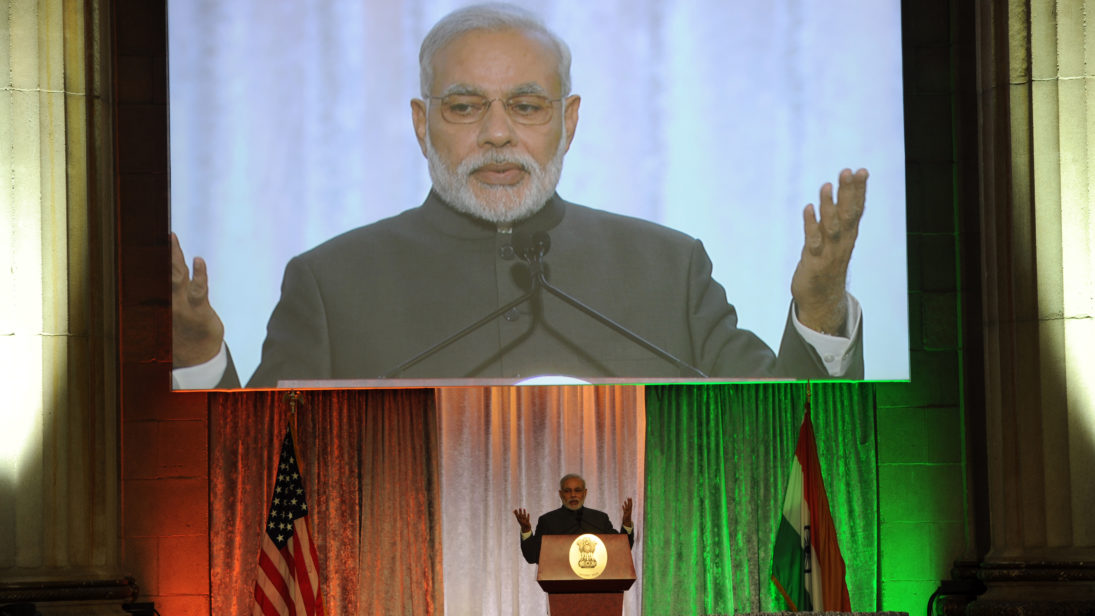
Article Review: Gaurav Kampani. “New Delhi’s Long Nuclear Journey: How Secrecy and Institutional Roadblocks Delayed India’s Weaponization,” International Security 38:4 (Spring 2014): 79-114.
Gaurav Kampani examines a significant research puzzle in nuclear proliferation literature, namely, India’s slow weaponization process. Addressing the period 1989-1999, he argues that despite acquiring nuclear weapons in 1989-1990, New Delhi lacked the capability to deliver them in a reliable manner until possibly 1996 (p. 81). According to Kampani, internal secrecy prevented India’s swift acquisition of operational nuclear capability. His article is based on meticulous attention to secondary sources, some Indian primary sources, and extensive interviews of Indian policy planners and decisionmakers— both civil and military. In a field that celebrates large-N studies and quantitative research, Kampani’s work stands out as an impressive single case study accomplished through qualitative data analysis.[1]
One of the key strengths of Kampani’s article is his attempt to define a nuclear device as opposed to a weapon, and the process of weaponization as distinct from the operationalization of weapons (p. 80-81). By drawing these sharp distinctions, Kampani develops a critique of the alarmist tendencies witnessed in the context of post-1998 South Asia, and more recently with respect to Iranian and North Korean nuclear programs. He argues that while such tendencies are often predominant among U.S. proliferation scholars, senior bureaucrats, policymakers and think tank experts, one must focus more on the “process of proliferation” instead of “proliferation outcomes” and their “imagined consequences” (p. 114).
Kampani’s work can be critiqued however, on at least four grounds. First, his research is overly based on interviews, a large part of which is non-attributable owing to the conditions of anonymity that the interviewees requested. While his research strategy is understandable owing to the paucity of Indian archival data on a rather recent time period, non-attributable interviews make data excessively hard to verify.
Second, while the article underlines the “weakly institutionalized nuclear social network” in India (p. 89), and the distancing of the military from India’s nuclear program (p. 93), Kampani emphasizes that secrecy is the core reason behind New Delhi’s slow weaponization process. This monocausal explanation of a complex process in a large country is counterintuitive and incomplete. This is because at least two significant explanatory variables are missing from his article— (a) India’s high resource constraints being a developing country, and (b) India’s restricted technological capacity in the context of the sanctions imposed after New Delhi’s 1974 nuclear test.
Third, national nuclear programs are not insulated from foreign assistance. External nuclear suppliers can both increase and decrease the pace of a country’s nuclear program.[2] However, Kampani’s comparison of India with other nuclear weapon states (Figure 1, p. 87), does not take into account that most of these countries received foreign technological assistance for nuclear weapons development, e.g. South Africa received Israeli assistance, Israel received French assistance, Pakistan received Chinese assistance, and China received Soviet assistance until the Sino-Soviet split. While India received civil nuclear assistance, there is no knowledge of New Delhi benefiting from explicit foreign help for the development of its nuclear weapons.
Fourth, while the article pays considerable attention to the Indian air force, as the key transporter for the delivery of nuclear weapons, it ignores India’s space program. The time period under Kampani’s study witnessed progress in India’s space program, with respect to the Integrated Guided Missile Development Program, which he only briefly alludes to in footnote 73, without conferring much weight on it. Greater attention to the space program could have enabled Kampani to present a more comprehensive picture of the weaponization process on one hand, and explore the international character of technological cooperation relevant to India’s nuclear program on the other.[3]
Nevertheless, his criticism of the linearity of expectations with respect to nuclear proliferation (i.e. device to weapon to delivery systems to operationalization) in censuring the ‘nuclear alarmists’ is an apposite one. On the whole, Gaurav Kampani’s article is a commendable piece of work given that it tackles a relevant and complex issue, where data is indeed very scarce.
The complete version of this review is forthcoming in H-Diplo in late 2014.
_______________
[1]See for instance Matthew Kroenig, Exporting the Bomb: Technology Transfer and the Spread of Nuclear Weapons (Ithaca, NY and London: Cornell University Press, 2010); Matthew Fuhrmann, Atomic Assistance : How “Atoms for Peace” Programs Cause Nuclear Insecurity, Cornell Studies in Security Affairs (Ithaca: Cornell University Press, 2012); Nuno Monteiro and Alexandre Debs, “The Strategic Logic of Nuclear Proliferation,” in Nuclear Studies Research Initiative Launch Conference (Austin, TXOctober 2013).[2] See for instance, Alexander H. Montgomery, “Stop Helping Me: When Nuclear Assistance Impedes Nuclear Programs,” in Nuclear Renaissance and International Security Workshop (Georgia Institute of Technology, Atlanta, GA2010).[3] See Ashok Maharaj, “An Overview of Nasa-India Relations,” in Nasa in the World: Fifty Years of International Collaboration in Space, ed. John Krige, Angelina Long Callahan and Ashok Maharaj, Palgrave Studies in the History of Science and Technology (New York, NY: Palgrave Macmillan, 2013).***